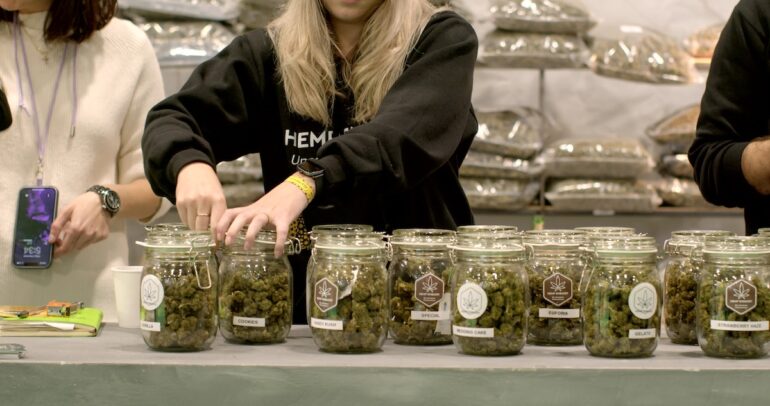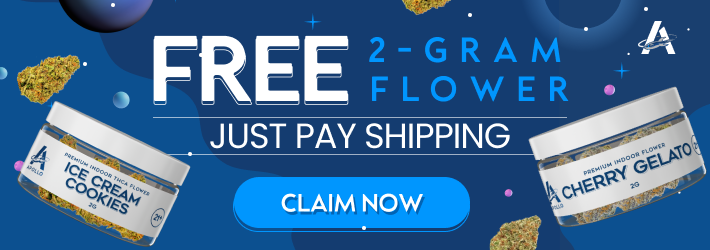Even without a pandemic that caused economic strife and limited the budgets of millions of people around the globe, industries and businesses are always seeking a way to increase their customer base.
In this day and age, that means turning to those in the cannabis industry.
By marketing to cannabis consumers and canna-culture, businesses of all types are starting to see just how profitable this kind of industry truly is. Already, there are many leading companies such as Uber Eats, Amazon, and even the popular fast-food chain Wendy’s that are achieving larger profit margins by targeting cannabis users and supporters of cannabis.
Why Are Companies Targeting Weed Customers?
Before the legalization of cannabis use started sweeping the nation, the idea of a cannabis user was considered unprofessional and unmotivated. However, with today’s cultural shift in acceptance and widespread public perception of cannabis use as a beneficial medicinal plant, the idea of “who” exactly is using cannabis has changed dramatically.
Studies show that most cannabis consumers in the US fall somewhere in the age range of 35-55, with the average cannabis consumer making more than $50,000 annually in income. With just this information in mind, you could see how businesses of all types could profit off of cannabis consumers. These are people of established ages who have above-average incomes. They will have the money to spend on products like cannabis, as well as cannabis-related products — especially keeping in mind that the average consumer spends $150-$200 on weed a month.
Interestingly enough (especially for brands), 51% of daily smokers would still buy the same amount of weed even with more inflation. If there is any dedicated audience to market to, it’s those who enjoy marijuana.
Furthermore, cannabis consumers are knowledgeable about trends in the consumer marketplace; weed consumers want to know what they’re buying and where it comes from.
All of this is good news for retailers and marketers who seek innovative ways of meeting the needs of their customers. Not only are cannabis consumers more likely to spend money when properly motivated, but they are also more likely to influence others in making choices through their higher-than-average use of social media platforms such as Twitter, Instagram, and TikTok.
The Effects of Using Cannabis and Its Benefits to Industries
Cannabis use is associated with a variety of effects that can be considered positive and negative. However, all of the effects provide industries with an opportunity to market their products or services.
One of the most notable positive effects of cannabis consumption is increased appetite. This is good for restaurants, food services, grocery stores, and convenience stores looking to increase brand awareness and profits from a demographic with an almost insatiable appetite for munchie foods.
Additionally, with health crazes and multiple alternative dietary lifestyles currently trending in the US, almost any restaurant or convenience store can benefit by altering its menu to accommodate dietary restrictions, further capitalizing on weed customers’ repeated appetites for satiating foods made from healthier ingredients.
Another notable cannabis-related effect is drowsiness. This side effect of cannabis use is a highly sought-after symptom for those experiencing insomnia or stress-related sleeping disorders. This particular side effect of cannabis consumption is ideal for businesses and brands seeking to promote their sleep products such as bedding, pillows, mattresses, and more.
Additionally, when cannabis is used in conjunction with sleep products such as comfortable sheets and pajamas, businesses can expect an even more significant amount of returns on their marketing campaigns. This speaks to the industries that focus on providing sleeping comfort and those companies that offer products designed for relaxation, such as bath bombs and bubble baths.
The final notable effect of cannabis consumption is general pain relief. This effect is essential for many cannabis users to treat chronic and acute conditions stemming from injury, genetic disorders, and even day-to-day routines.
Physical therapy and massage clinics would do well to capitalize on this effect by selling or offering gift cards for their therapeutic services or incorporating cannabis into their spa packages. In fact, in less conservative areas, many spas offer CBD massages or soaks, and these packages tend to be more expensive than others. But, they’re still some of the most popular options for many, illustrating just how appealing incorporating cannabis into businesses can be.
Cannabis Culture and its Benefits to Industries
It is not just about marketing to those who use cannabis to alleviate medical conditions. It’s also about marketing to those who use cannabis recreationally for fun and relaxation, which is an essential distinction in understanding how to promote products to weed customers effectively.
Recreational users have different habits and rituals surrounding cannabis consumption and should be marketed appropriately, ensuring they return for more products and services. Weed customers are not afraid to spend money on items that may be considered costly, including edibles and flowers, as long as they are promised a quality product or an entertaining experience.
This means that any industry looking to generate profit through fun and interactive experiences such as escape rooms, virtual reality experiences, and video games, should pay close attention to these consumers as they tend to be more than willing to spend money on the latest immersive technology and fun activities.
In addition to the entertainment industry, those who work in food services should also pay close attention to recreational cannabis users, as they tend to have a broader palate than those who do not use cannabis.
Hopeful restaurateurs and chefs looking to stand out in their industry should consider creating a menu that specializes in cannabis-infused dishes. Likewise, mixologists and bars should consider making cannabis-infused cocktails using THC or CBD oil tinctures to cater to those who do not drink alcohol but want a place where they can socialize and meet people.
After all, just imagine the noise that a brand like Starbucks could make within the industry by coming out with hemp-infused frappuccinos or CBD lattes.
A New Era in Product Marketing
In general, the opportunities that weed culture opens up for marketing new products are beyond exciting, and it has incredible potential for the brands who do it right. It’s important to take a step back and see how your business relates to cannabis culture — is it through wellness, fun, plant-based ingredients? No matter the correlation, appealing to those in the cannabis community creates the chance for brands to sell to a whole new community, as well as help make cannabis consumption become even more mainstream. And, what company wouldn’t want to say they were a part of the marijuana movement?
From CBD oils containing no THC to specialized cases for smoking accessories and vape pens, cannabis culture is creating a new era in product marketing. Cannabis users are far more open to trying out new products and services as long as they can trust the source of their purchase.
It is vital for cannabis marketing agencies, brands, and businesses to do their research before jumping on the bandwagon. This includes familiarizing themselves with cannabis laws, regulations, and industry standards to ensure they responsibly create and market their products.

